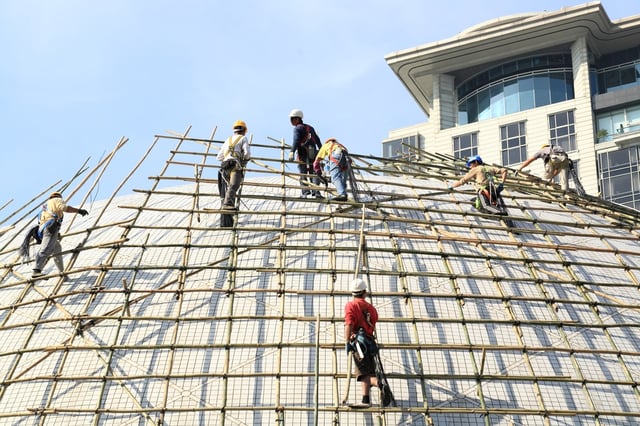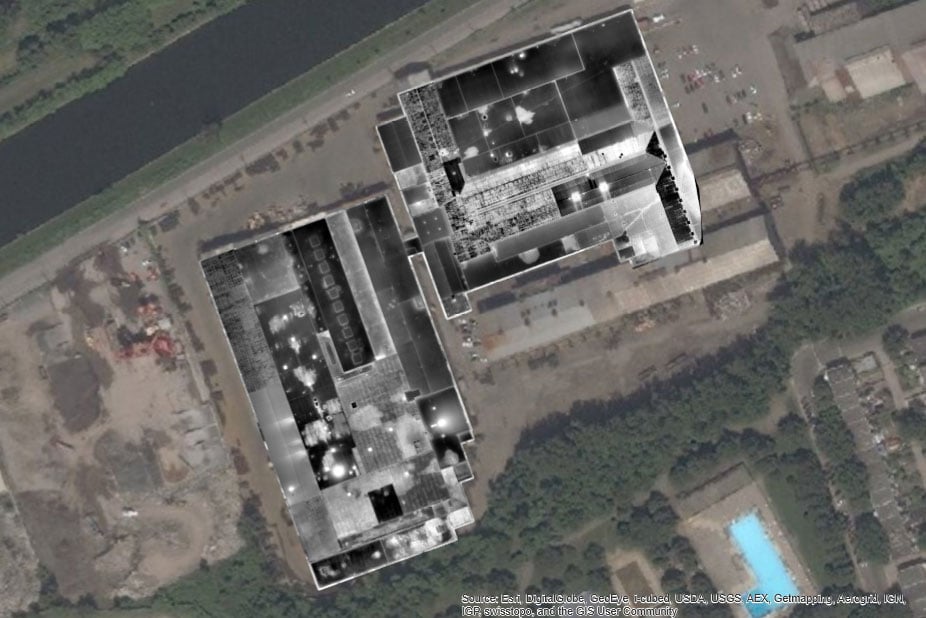
Falls from a height are one of the most common reasons for fatalities in the workplace. There are many reasons why inspection personnel need to climb ladders, scaffolding, undertake rope access procedures, or walk across building roofs. Full inspection of the building envelope is however a necessity to better focus maintenance activities over the building’s life. Professional UAV inspection services can dramatically reduce the time that workers need to spend physically on the building, and reduce risk for when they do.
One Fatality is too many
In 2015 the Federal OSHA[1] state that there were 4,379 worker fatalities across the United States, of which 927 (21%) were in construction. Of these, almost 40% (or approximately 8% of the total number of fatalities), were from falls; Leading to falls being highlighted as no. 1 in “Construction’s Fatal Four”[2]. Between October 8, 2015 to September 30 2016, OSHA statistics[3] reflect that there 67 of 1080 reported fatalities reported in the US were specifically related to workers being on roofs.
Similarly, Safe Work Australia cite that in the eight years prior to the end of June 2011, 11% of all workplace fatalities were from a height. When analyzing the Australian workplace statistics[4], ladders are the biggest killer, but also that the construction context is often thought to only applies to new build projects. The categorization of ‘construction’ can be misleading, as in Australia at least, 1 in 5 of these falls were related to actual construction; with the remaining applying to any general contractor who was climbing the building to undertake maintenance activities during that building’s lifespan2.
Why are workers on roofs?
The typical lifespan of a building’s shell (or envelope) is between 50-100 years[5]. The envelope, comprising its roof and facades, are the building’s primary defence. The sooner that any form of deterioration in the envelope is identified and remedied, the lower the building’s running and maintenance costs are, and the safer it will be for those who use it.
There are many reasons why a worker will be on a roof; it might be because repairs need to be made, or maintenance activities such as painting or applying various fireproof or weatherproof coatings are applied. The singular reason why a worker would need to regularly visit every location of the building’s envelope will be to undertake inspection routines. In some industries, scheduled inspection activities are demanded by regulatory compliance; in all cases, complete and regularly scheduled inspections of the entire building envelope are simply good practice.
How can risks be identified before an inspection takes place?
Buildings and industrial assets come in all shapes and sizes. Sometimes fall protection is available, sometimes not. Moisture and water accumulation are often the biggest enemy of the building envelope, and by its nature can accumulate in all sorts of places across a structure. As such, a worker will need to be able to see between, across and around all aspects of the building.
The roof might often be considered to bare the brunt of the weather and climate, and so should make the reasons for needing to inspect roofs self explanatory. The extent of weathering on each of a building’s façade should not be ignored. In doing so, it is important to consider a range of questions:
- How can risk be managed in the inspection process?
- How can a worker most efficiently traverse all extents of the building envelope?
- How can measures be put in place that ensure that a worker does not inadvertently stand on area of weakness?
- Professional use of ladders, scaffolding and rope access infrastructure will likely be governed by health and safety legislation, but will there always be absolutely no risk?
Surely, it is better for workers to not be on those roofs at all?
Keeping feet on the ground
Using professional Unmanned Aerial Vehicle (UAV or drone) inspection services, an asset manager can reduce the time that inspection personnel need to spend on the building itself. So long as a mission’s flight route has been well planned, a drone can collect imagery data that covers the entire building envelope in a fraction of the time that it takes for inspection personnel to traverse it.
It is usual that both visual and thermal imagery is collected. After applying automated statistical processes to convert the imagery into a 3D ‘point cloud’, it is straightforward for skilled interpreters can identify locations and areas of deterioration on the building envelope. Since the data is being viewed in 3D, both the roof and facades can be visually interpreted.
As the data in the point cloud is georeferenced with real-world geographic coordinates, a plan or a map can be provided to an inspection and maintenance team to identify areas of deterioration – before anyone needs to climb any ladders, scaffolding, undertake rope access procedures, or walk on the roof.
By acquiring this drone inspection data, and knowledge of the condition of the building before any maintenance or more in-depth inspection activities; an asset manager can better evaluate risk for their team, and efficiently schedule maintenance activities throughout the building’s life.
Reference
[1] “Commonly Used Statistics” United States Department of Labor OSHA https://www.osha.gov/oshstats/commonstats.html
[2] “Fatal Four: Safety in the Construction Industry” EHS Today http://ehstoday.com/construction/fatal-four-safety-construction-industry-infographic
[3] “Worker Fatalities Reported to Federal and State OSHA” United States Department of Labor OSHA, https://www.osha.gov/dep/fatcat/dep_fatcat.html
[4] “The falls tragedy continues: how it could be averted” Workplace access&safety, December 2013
[5] “Life Cycle Assessment - Life Cycle Balance” concretethinker.com/solutions/life-cycle-balance.aspx
Tags
Building Inspections




